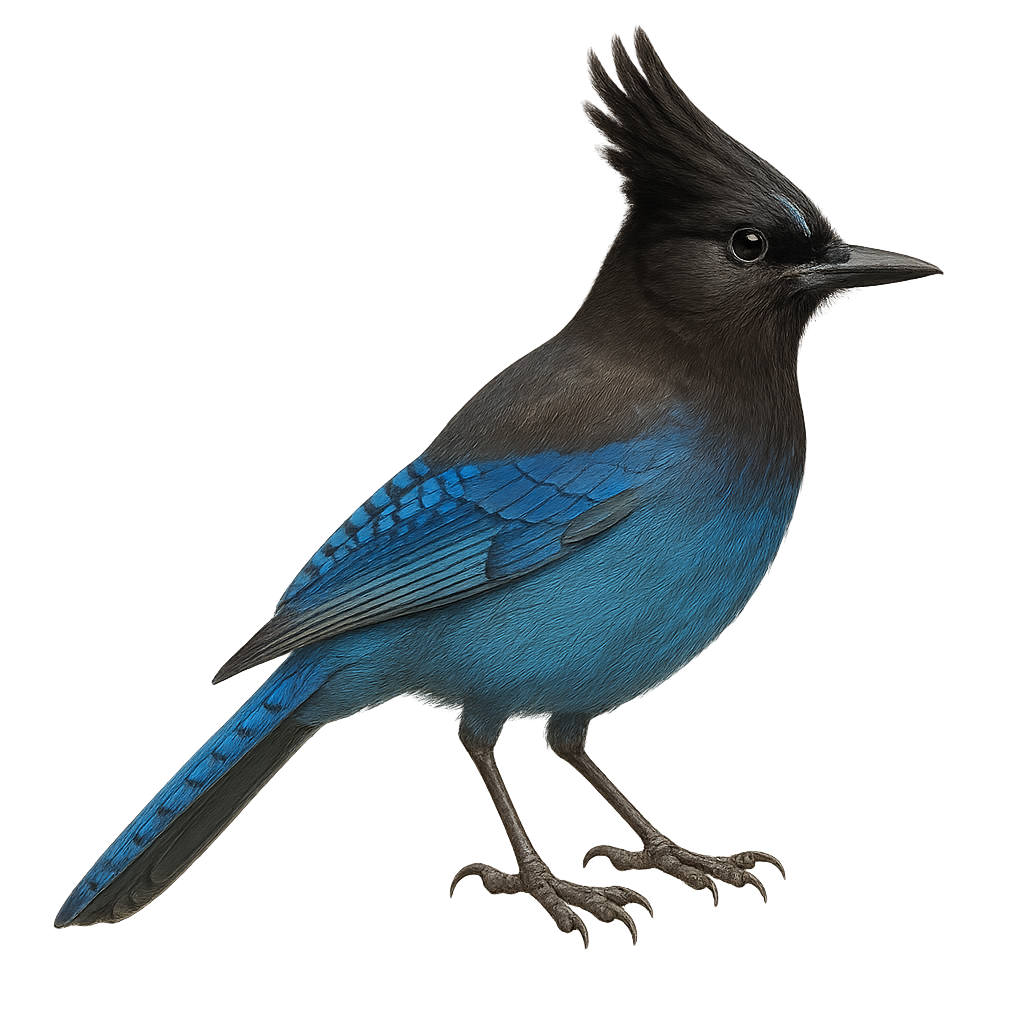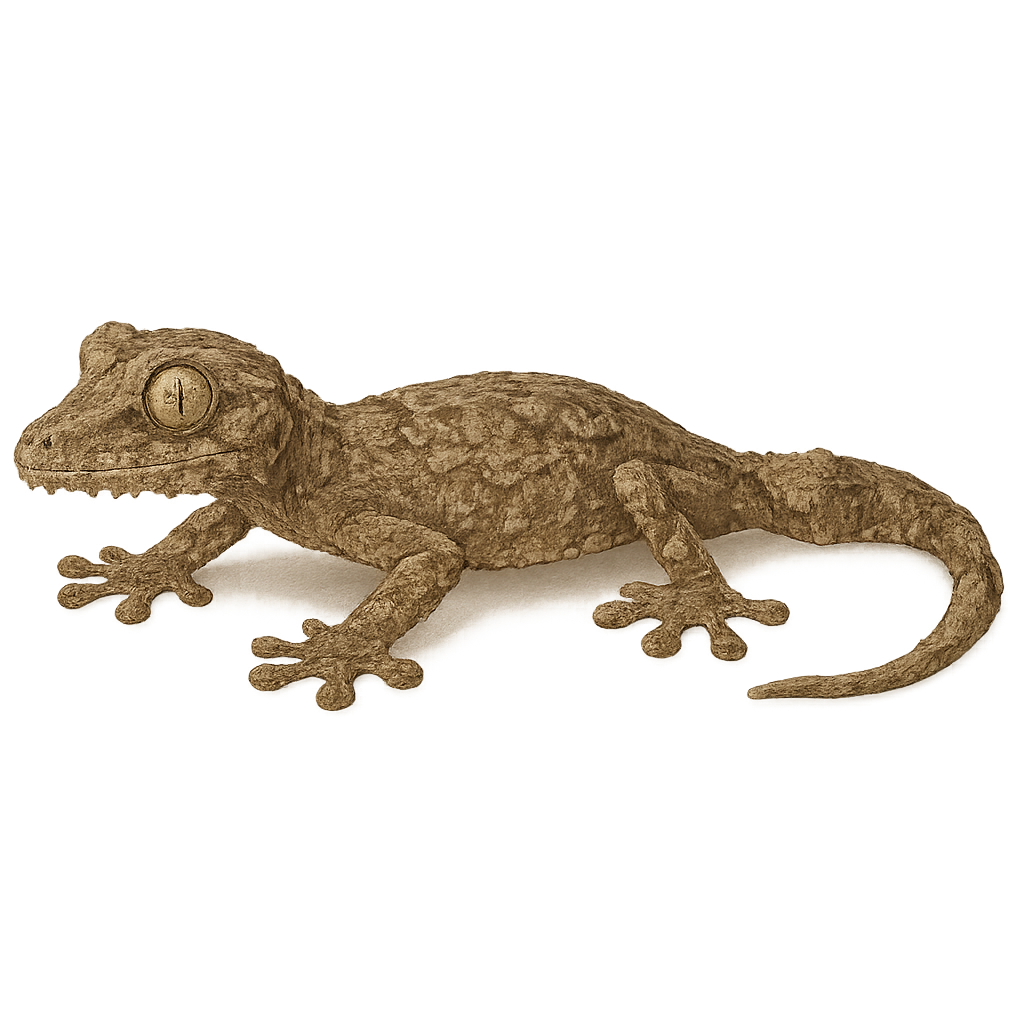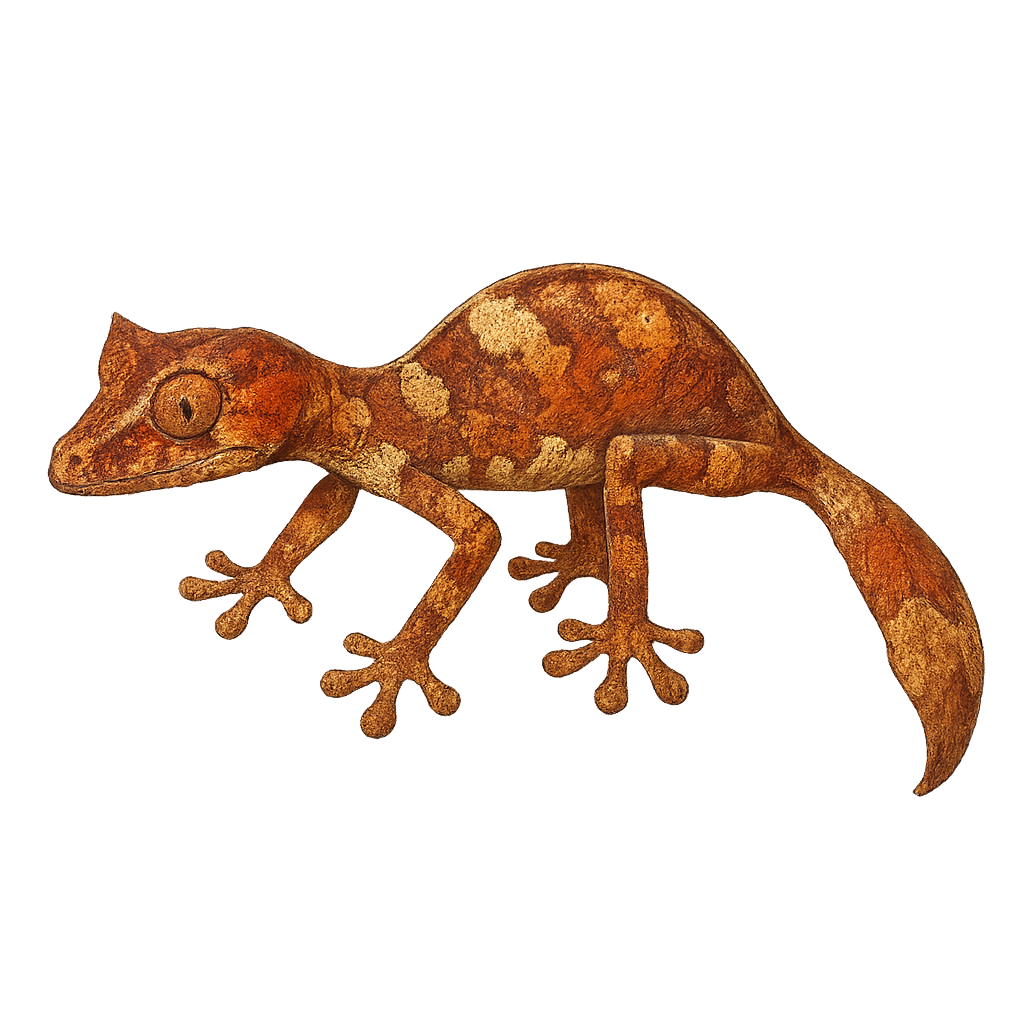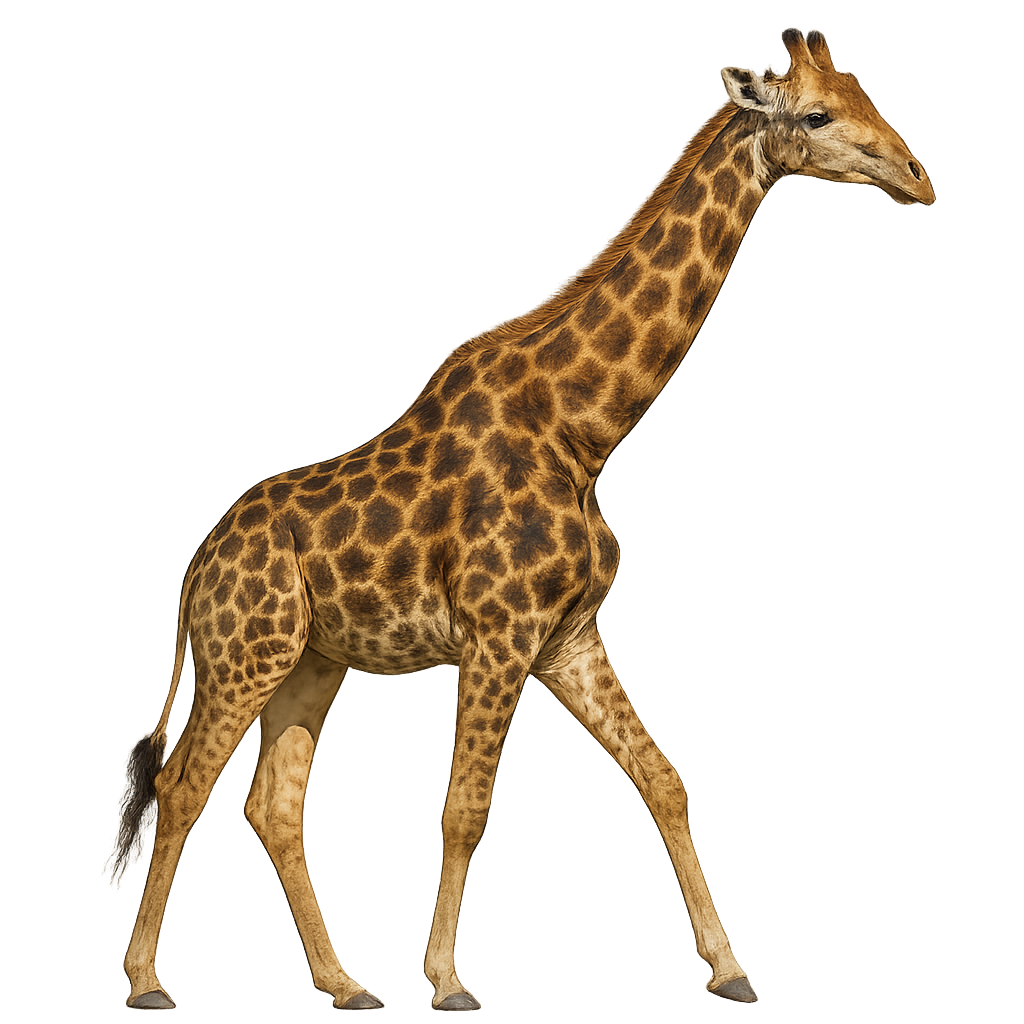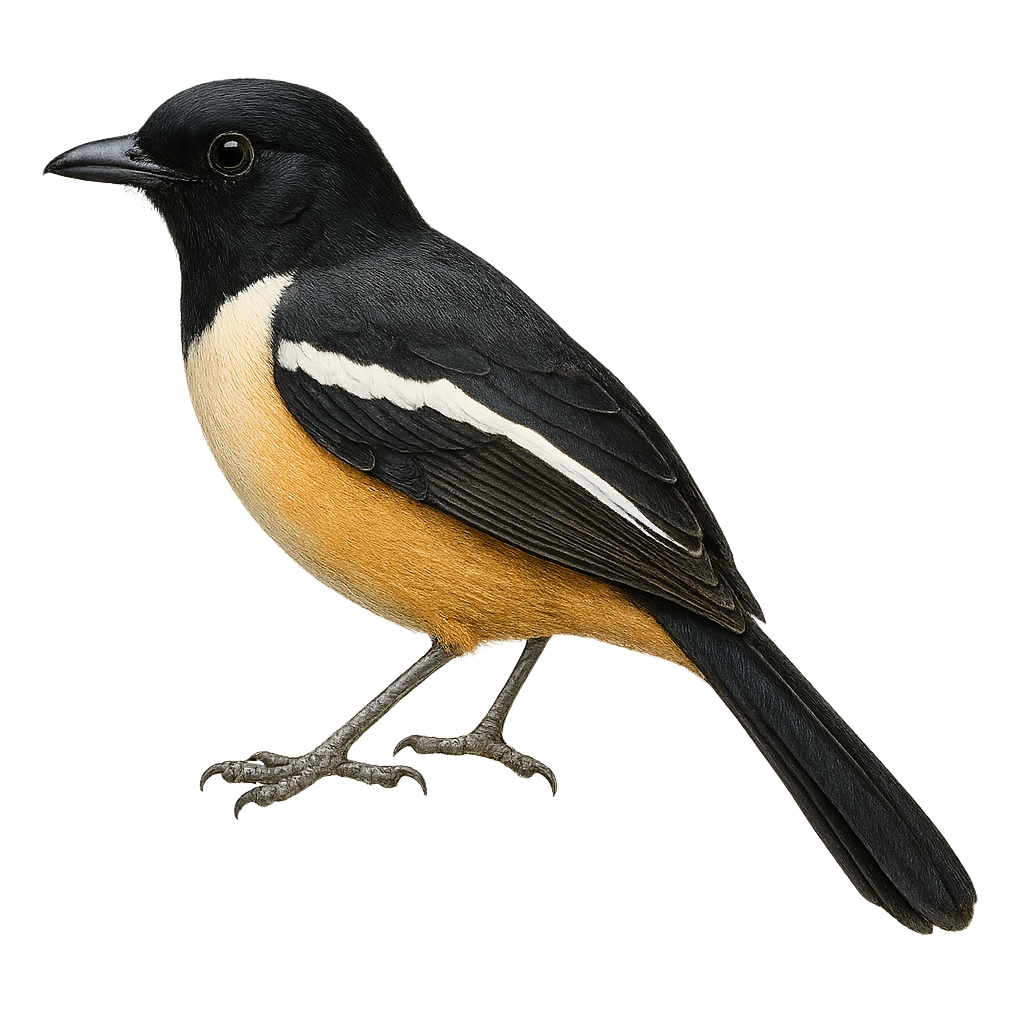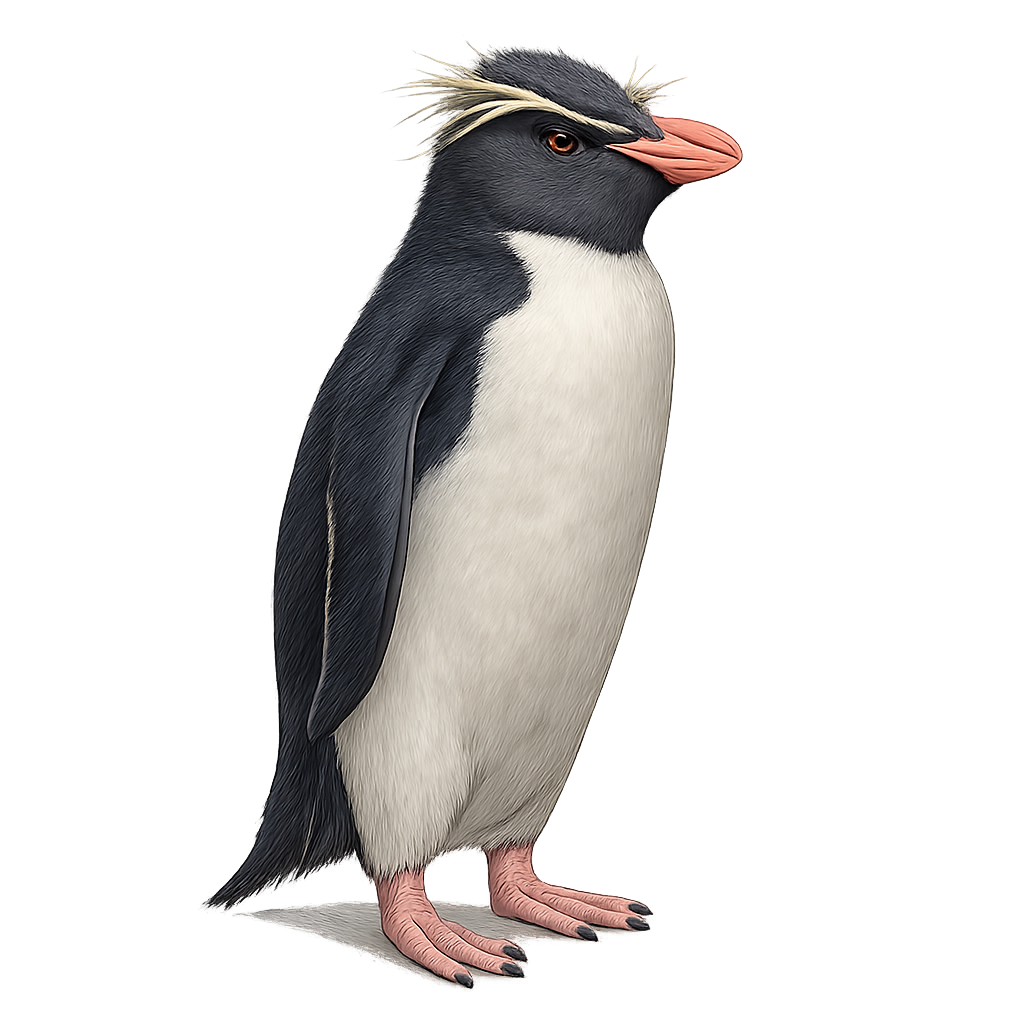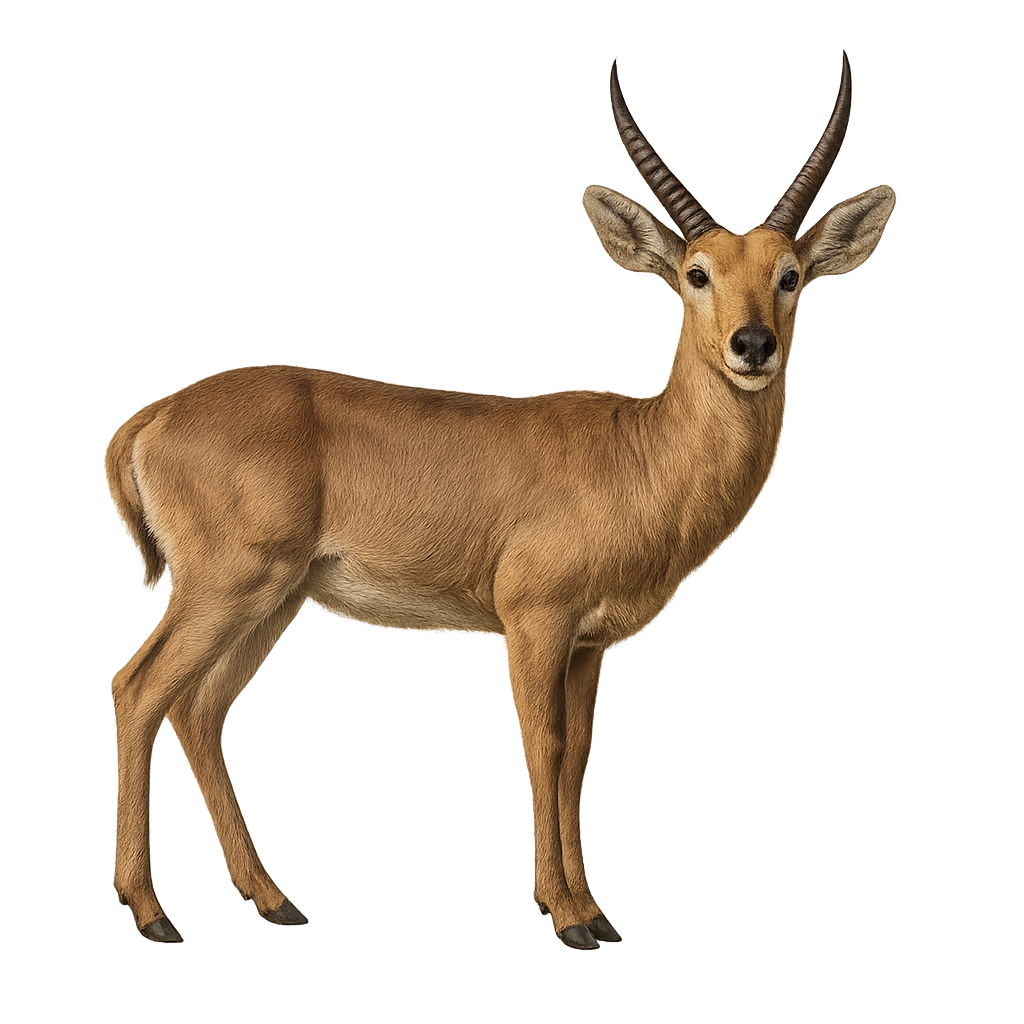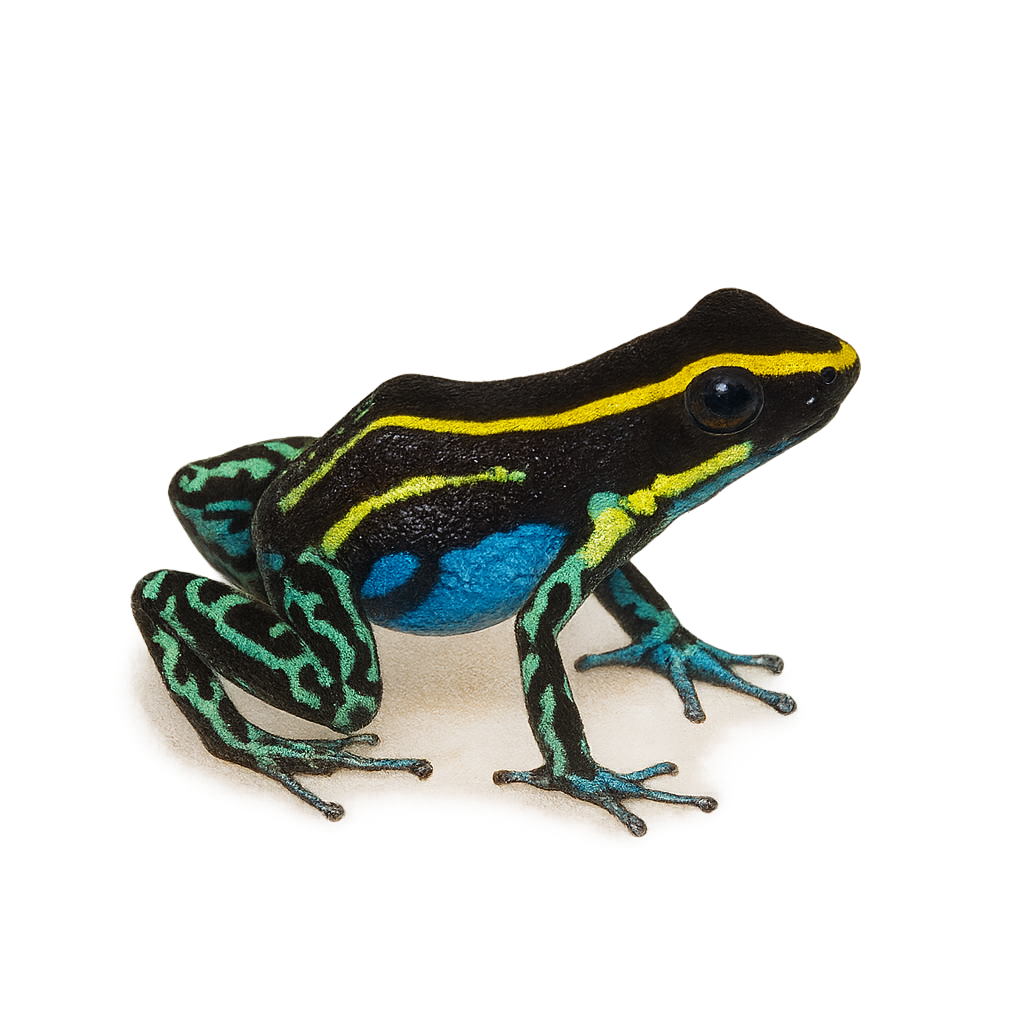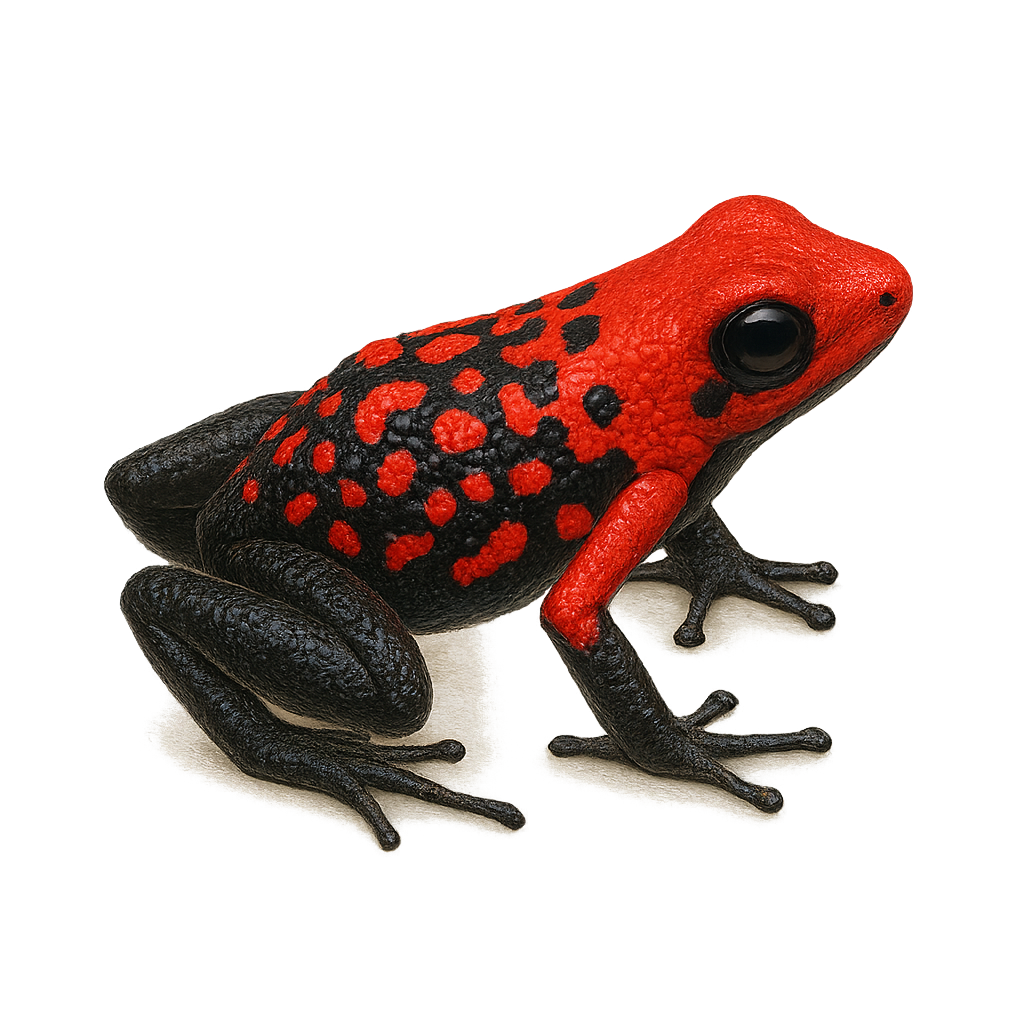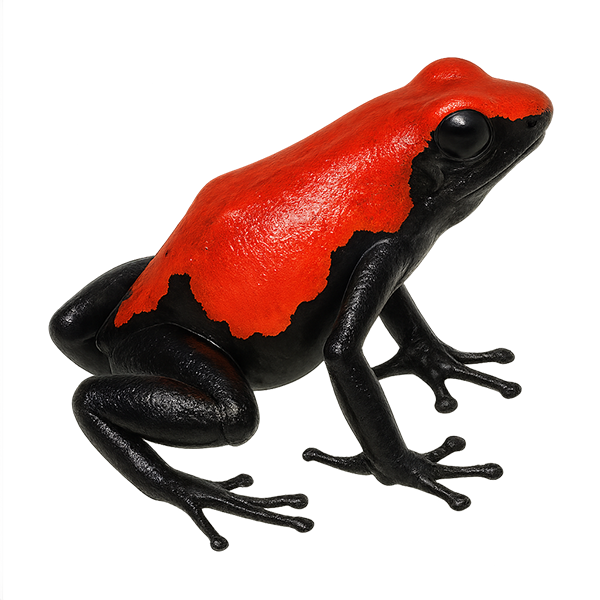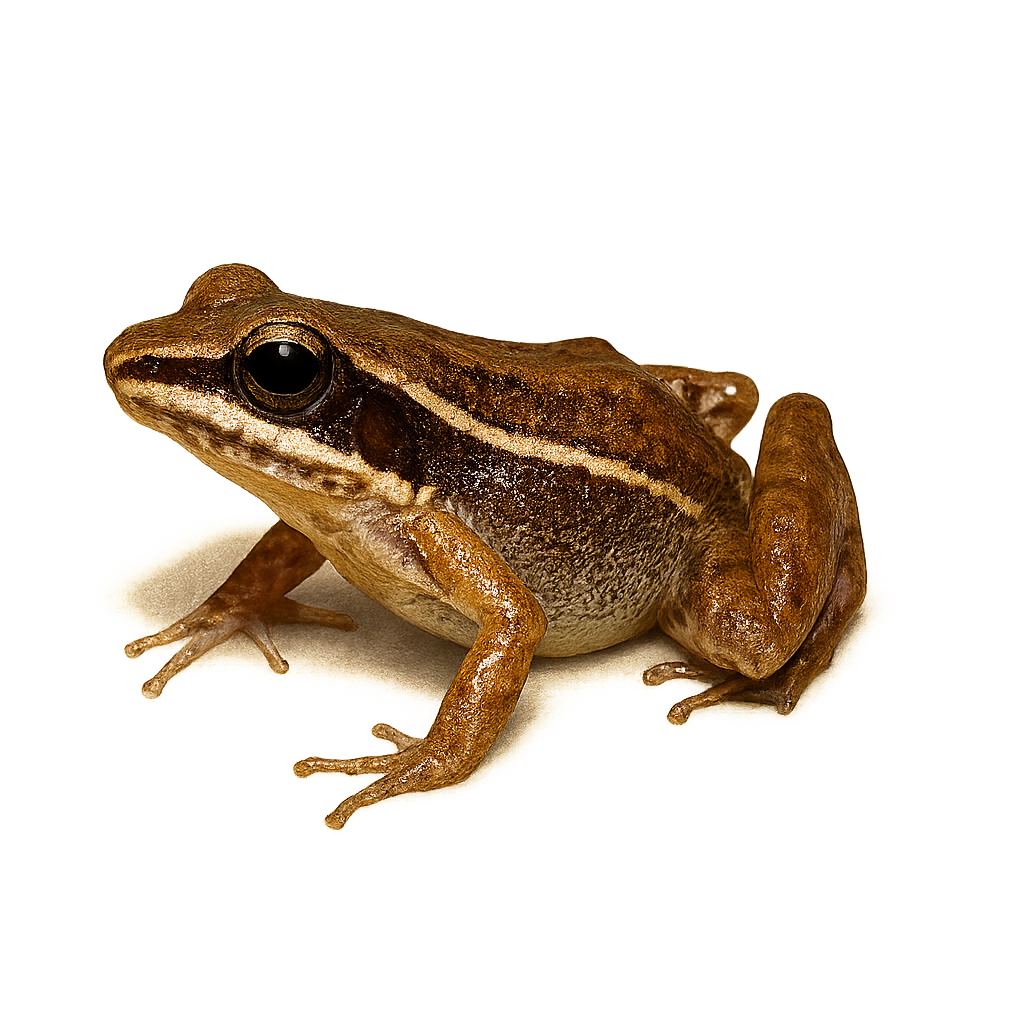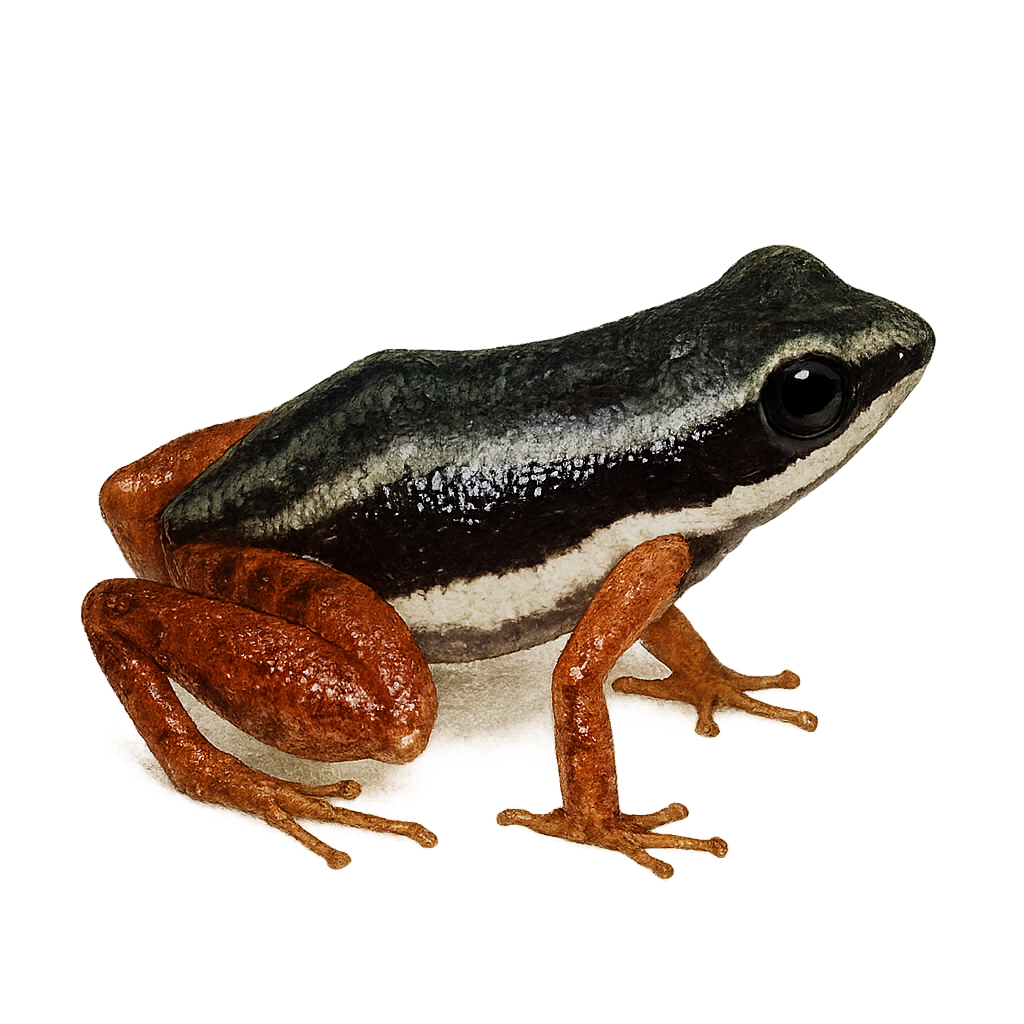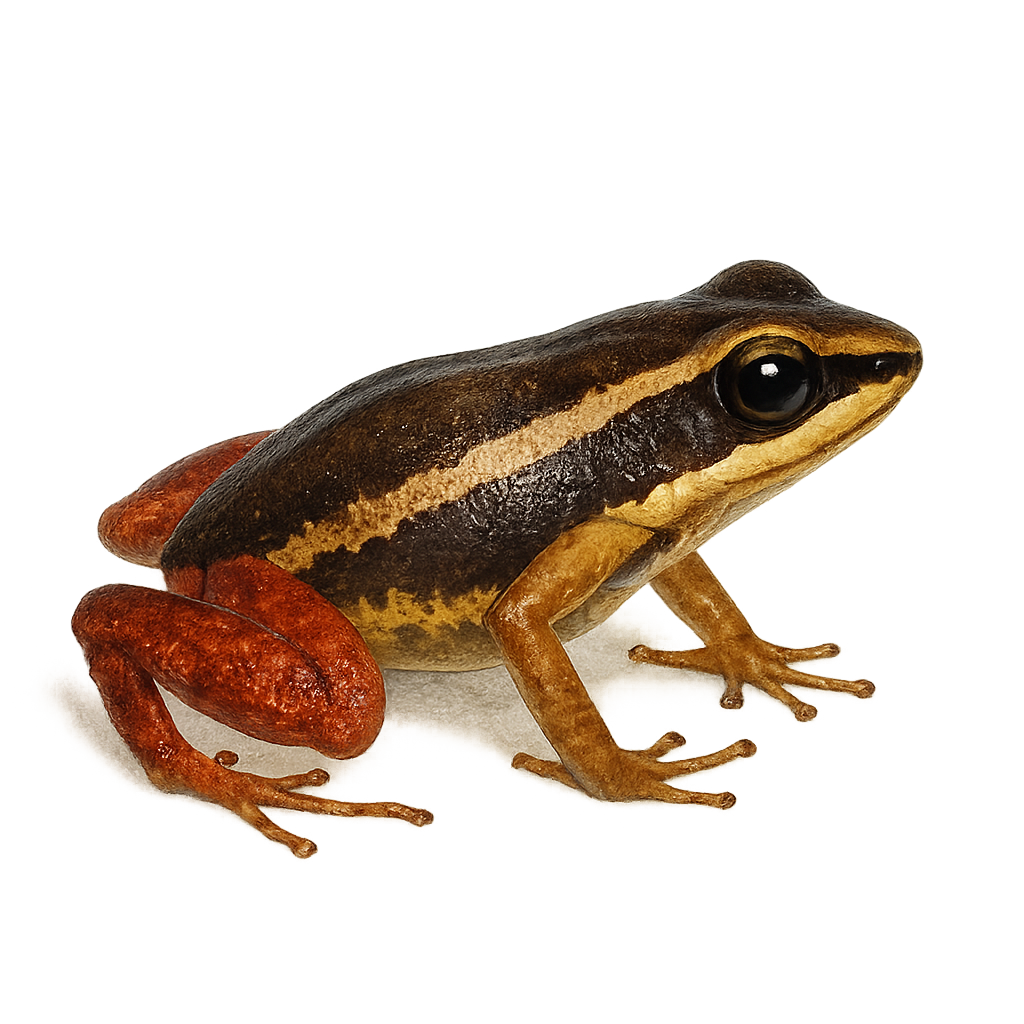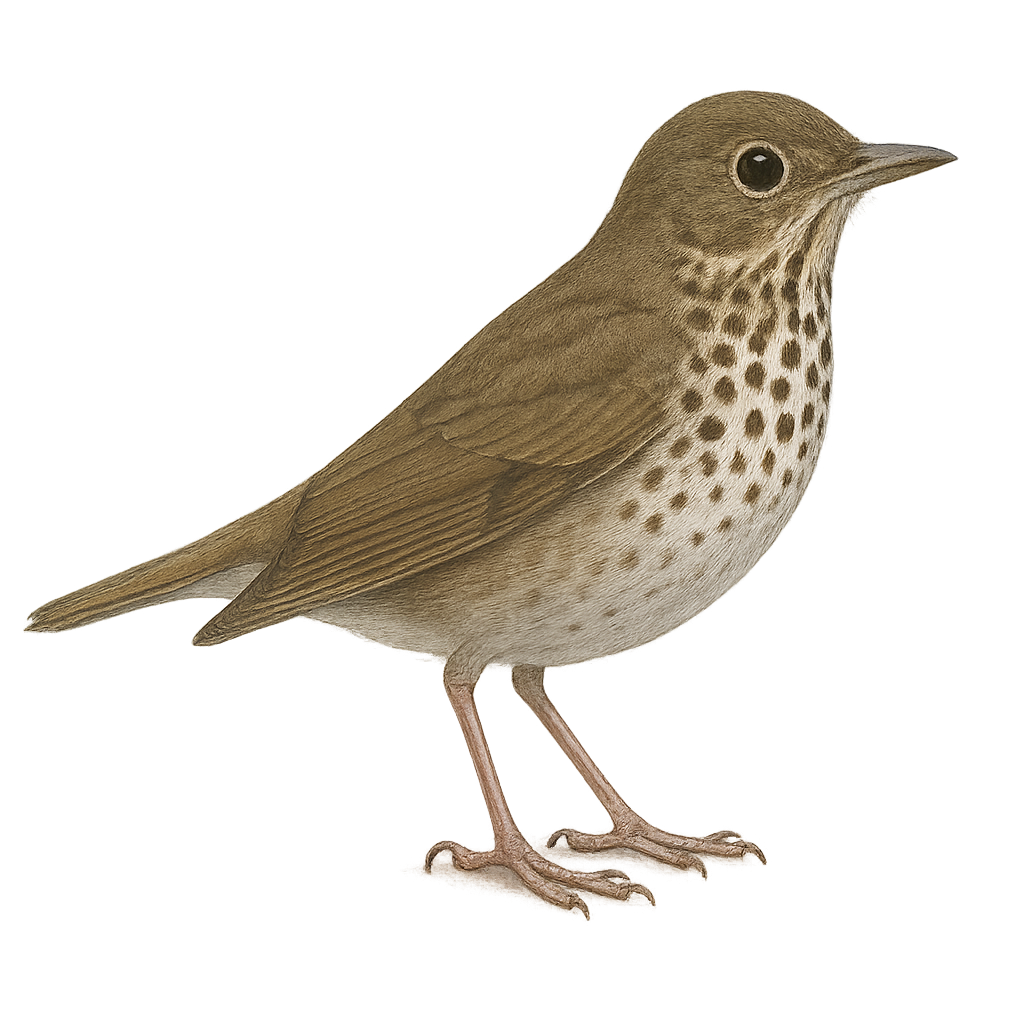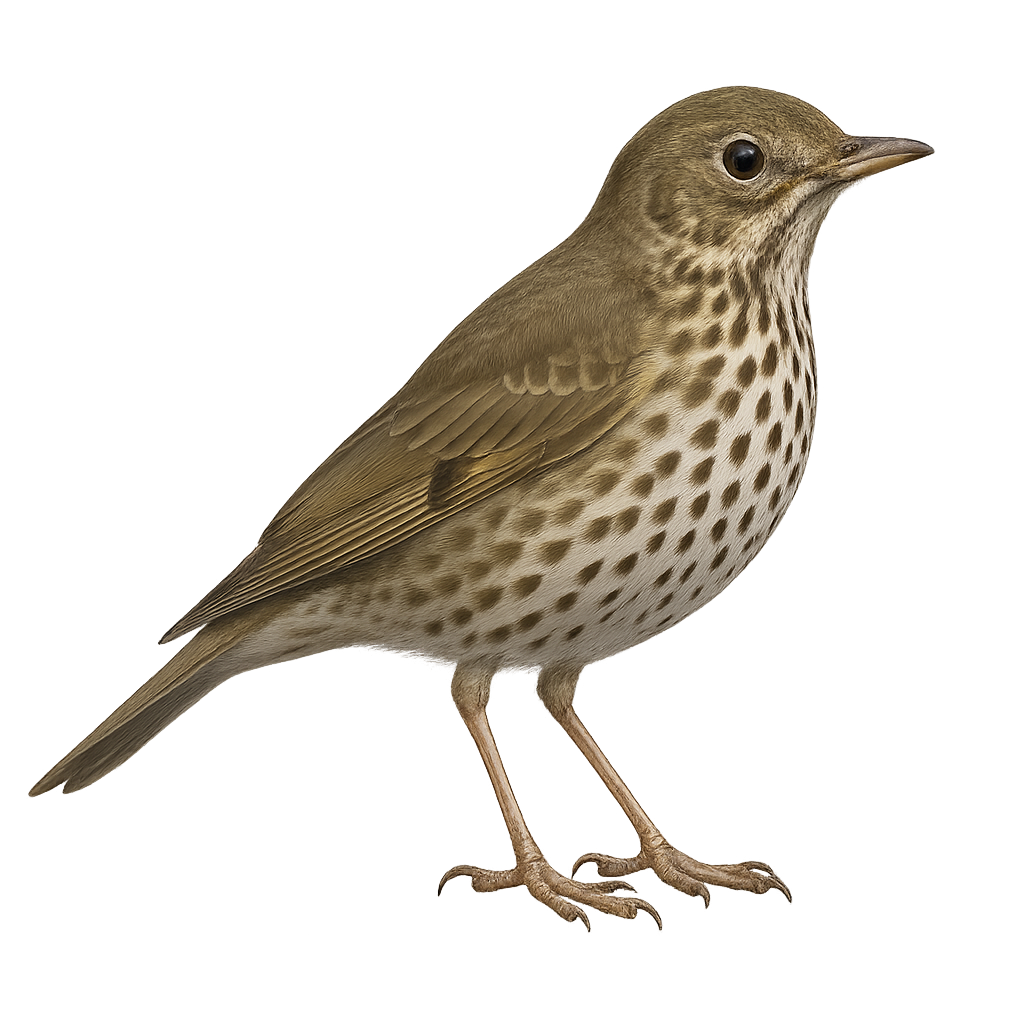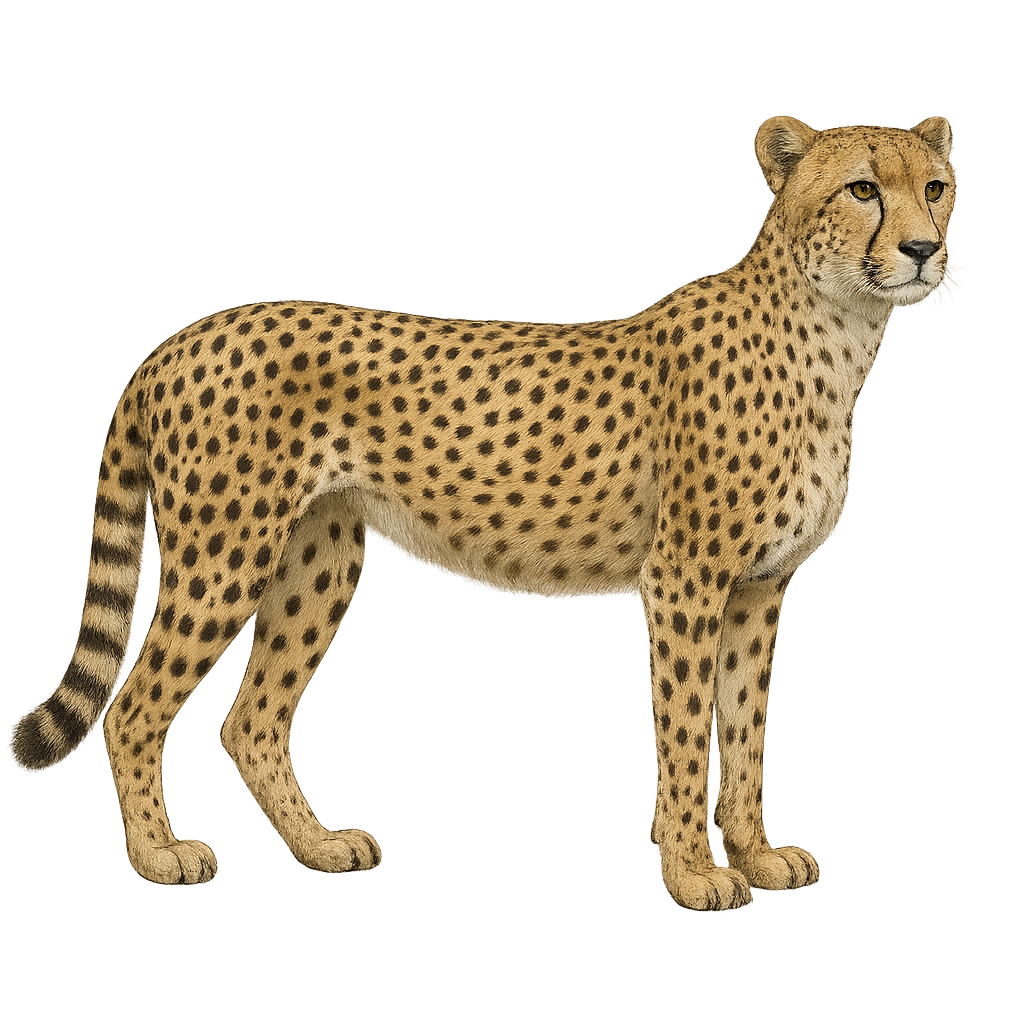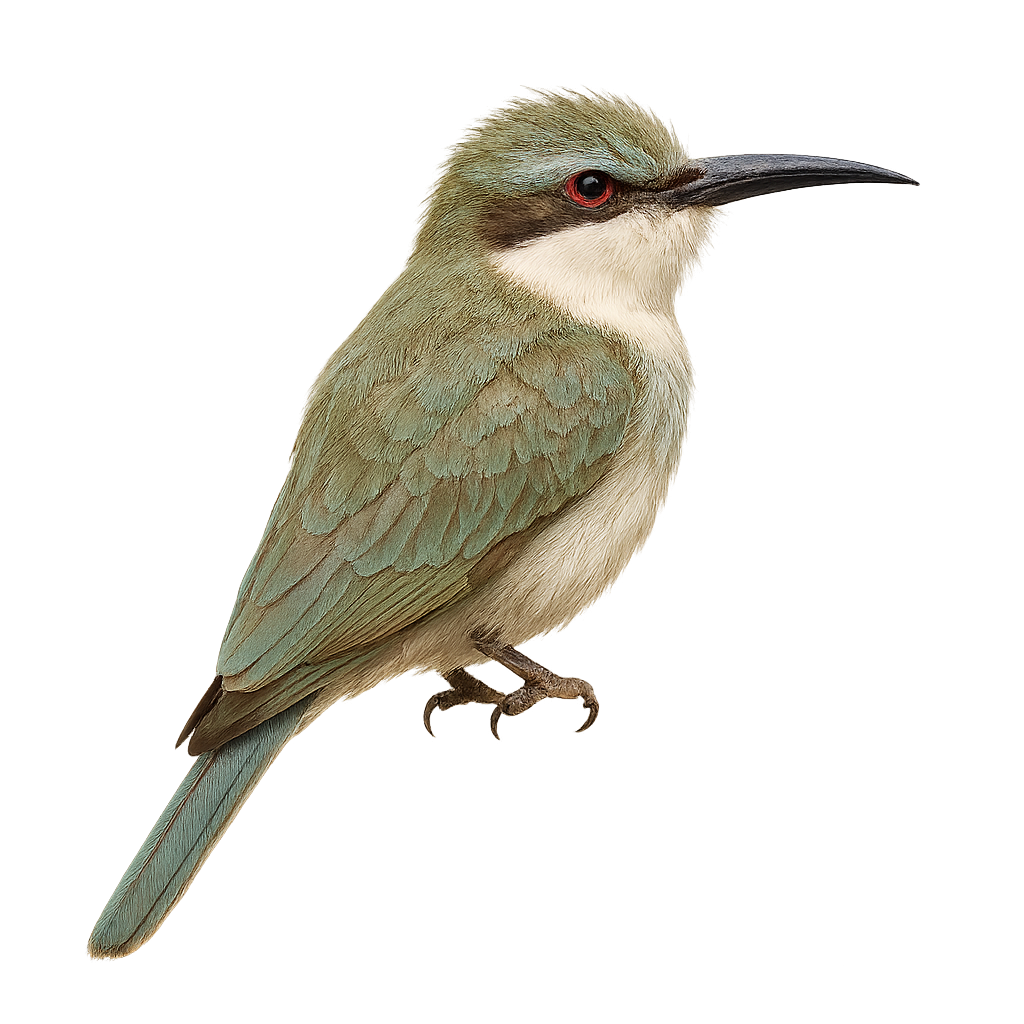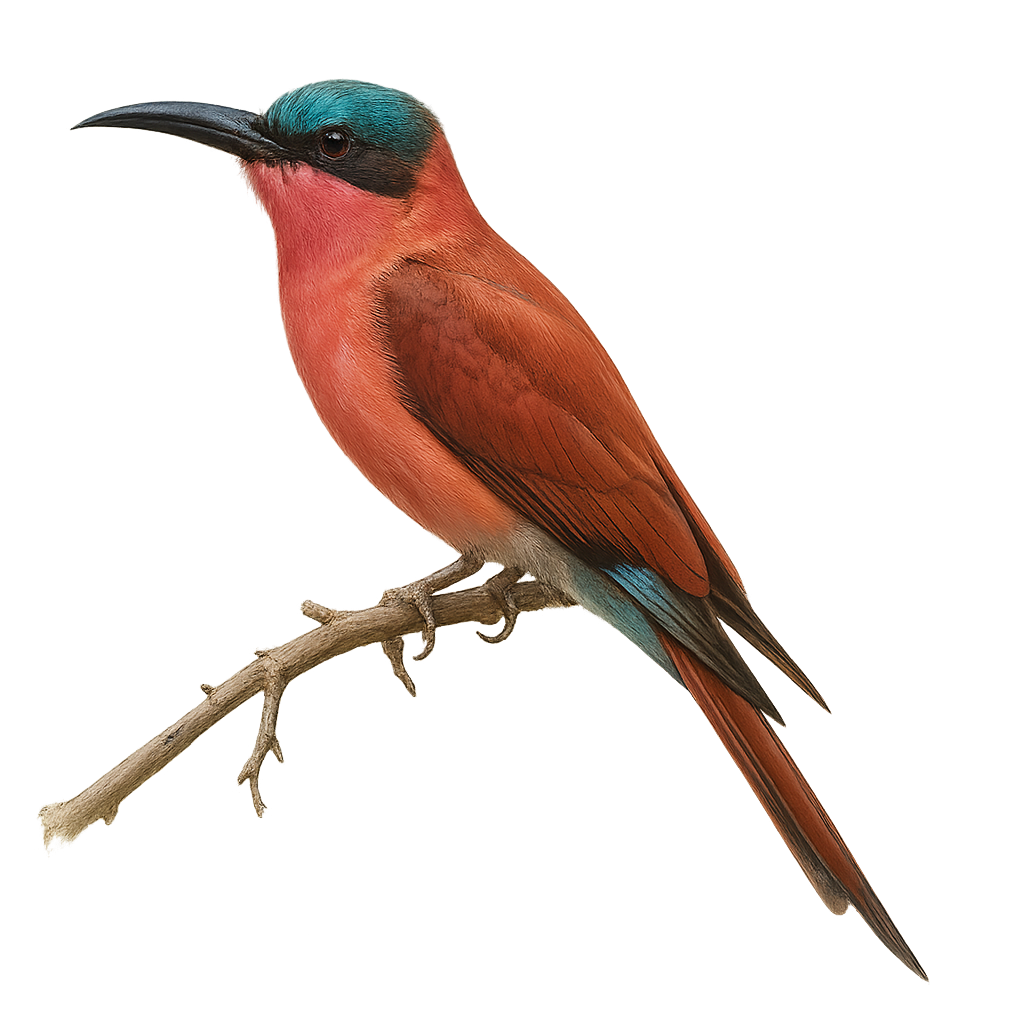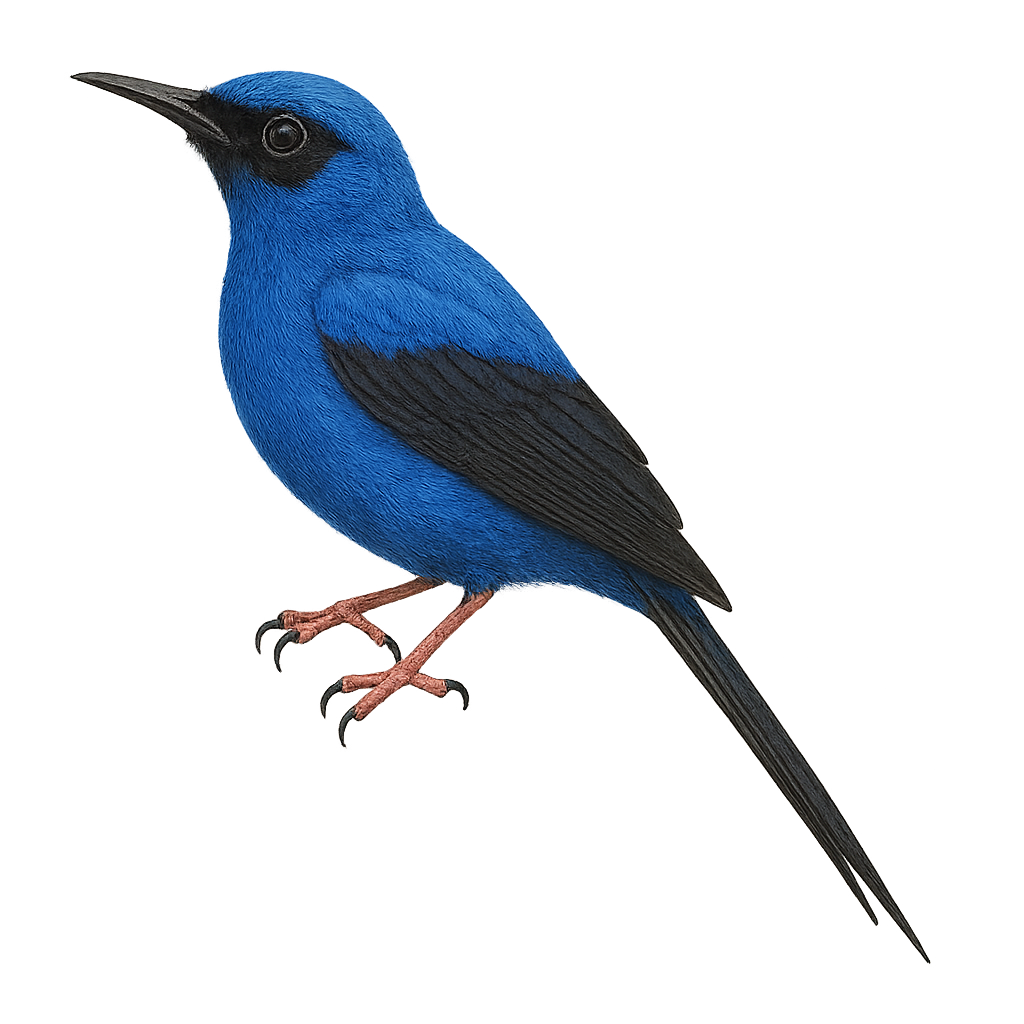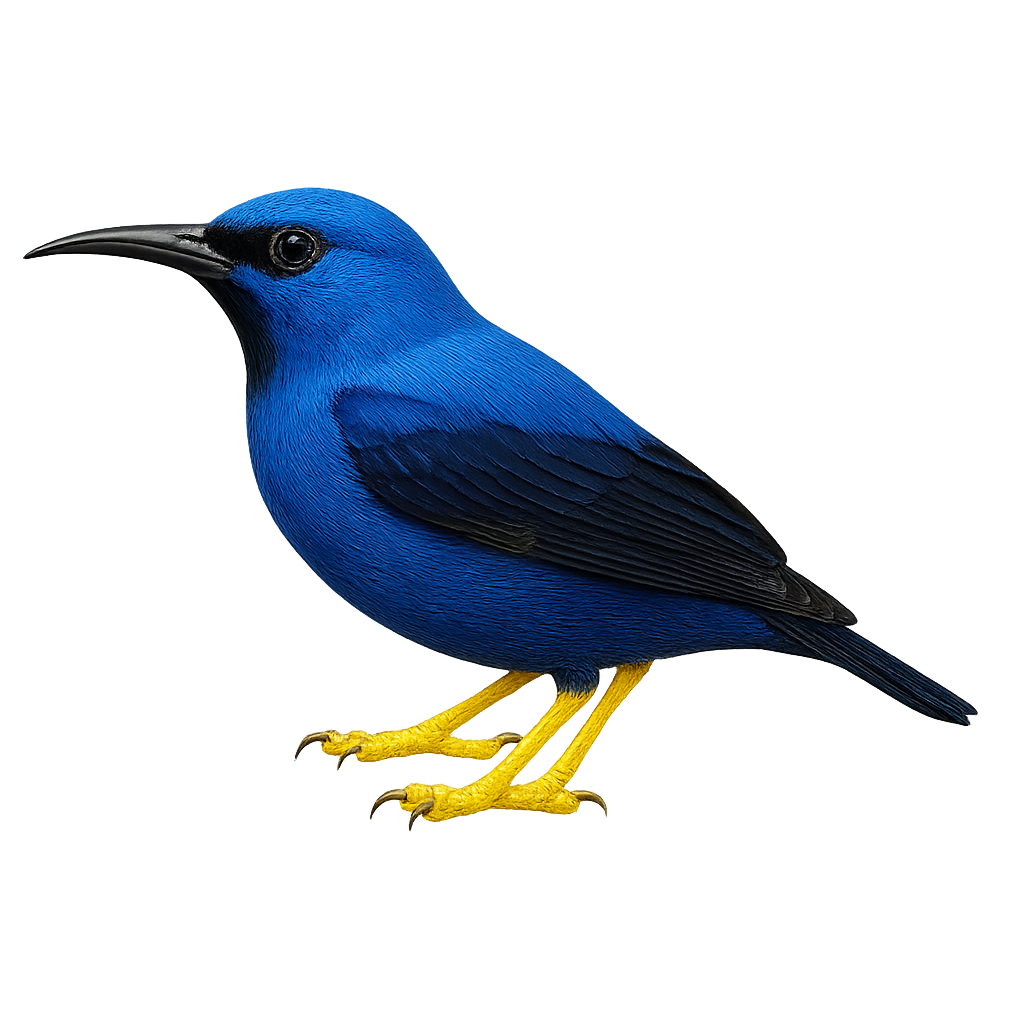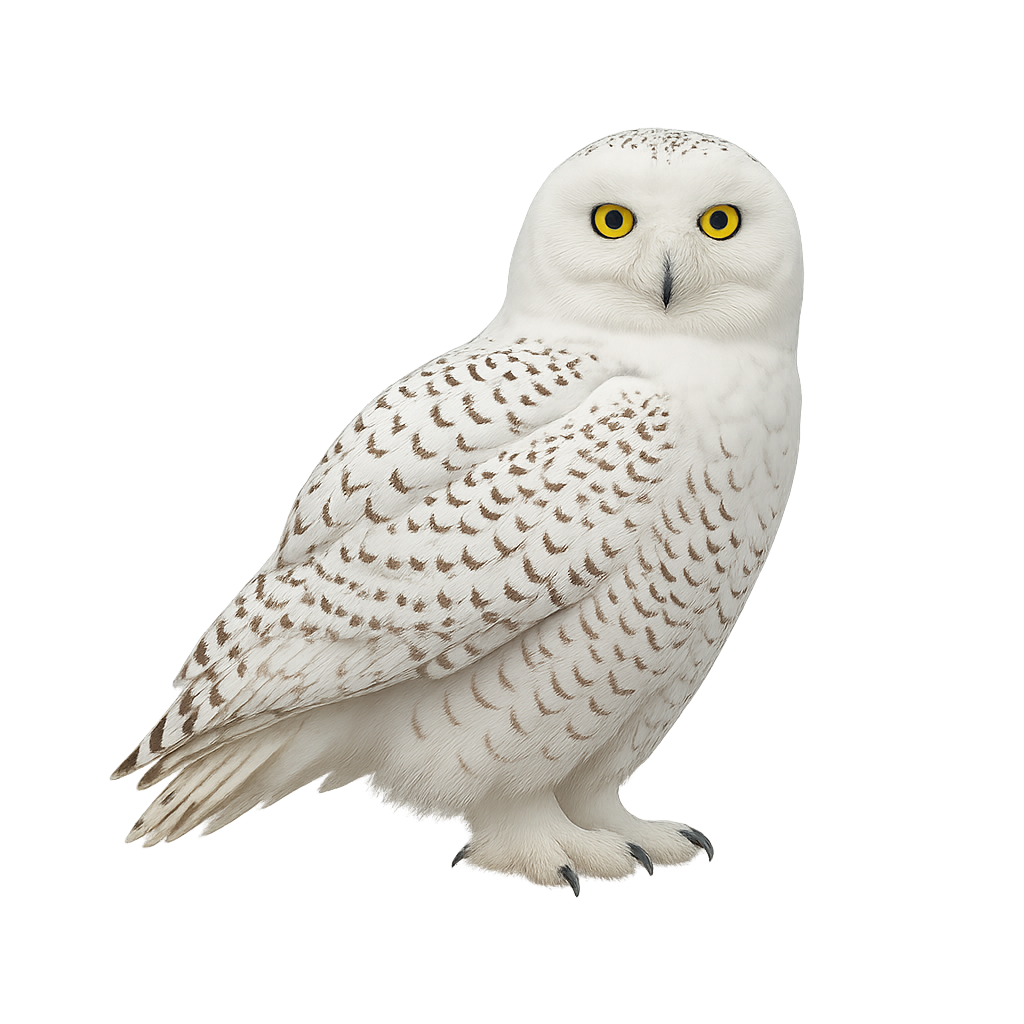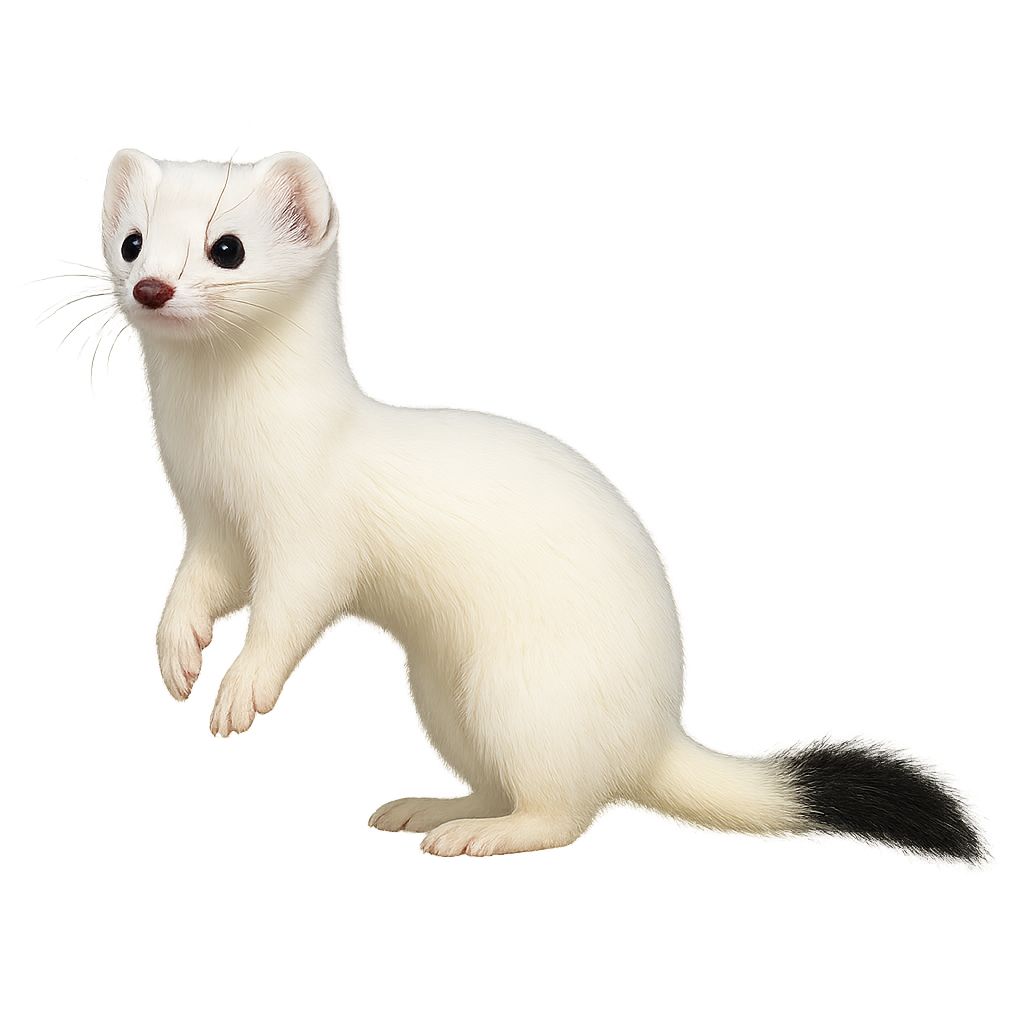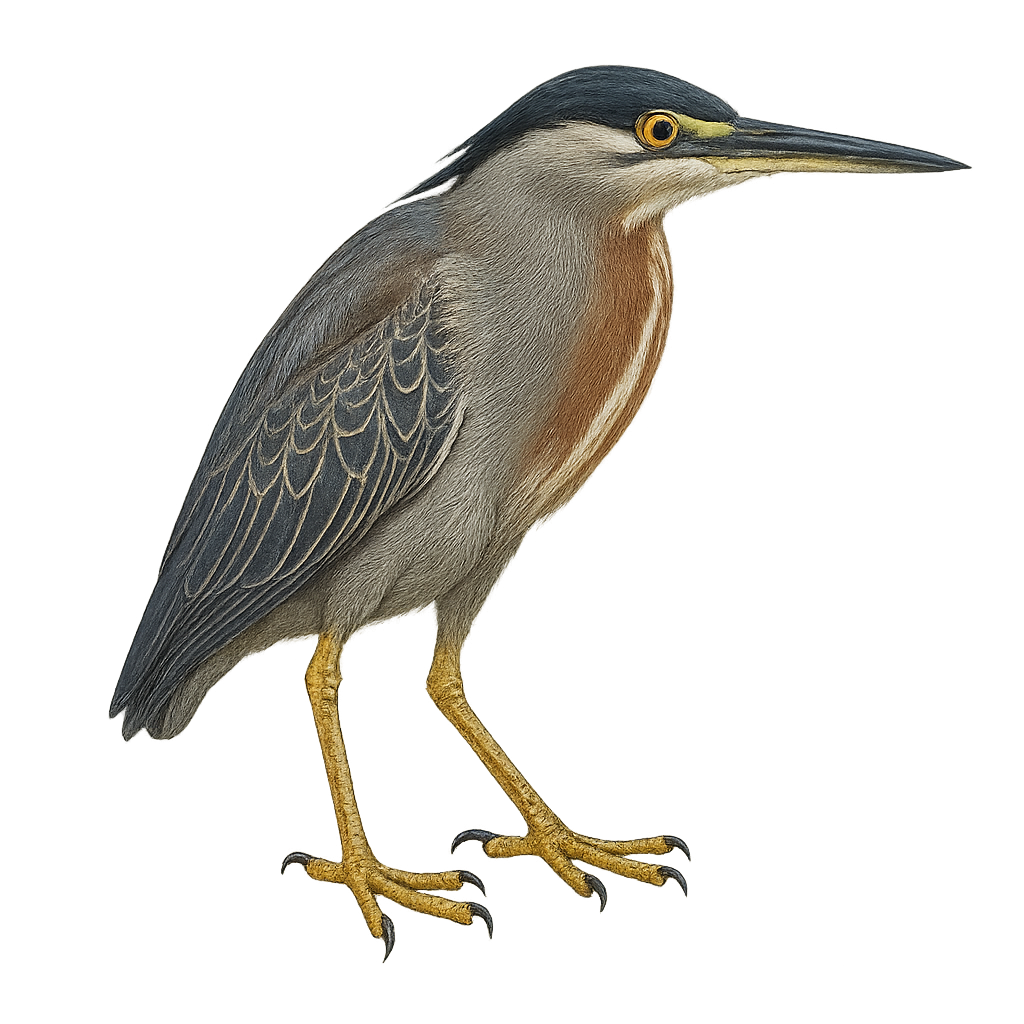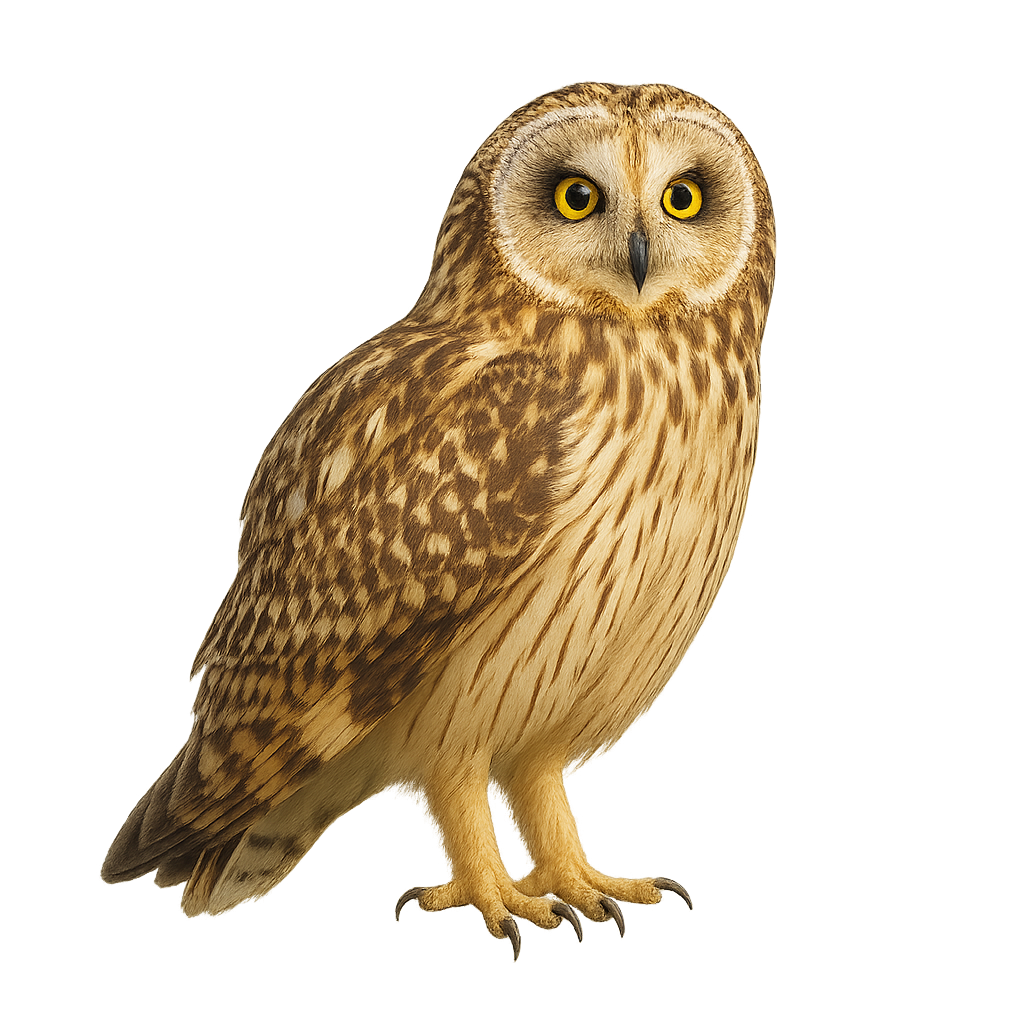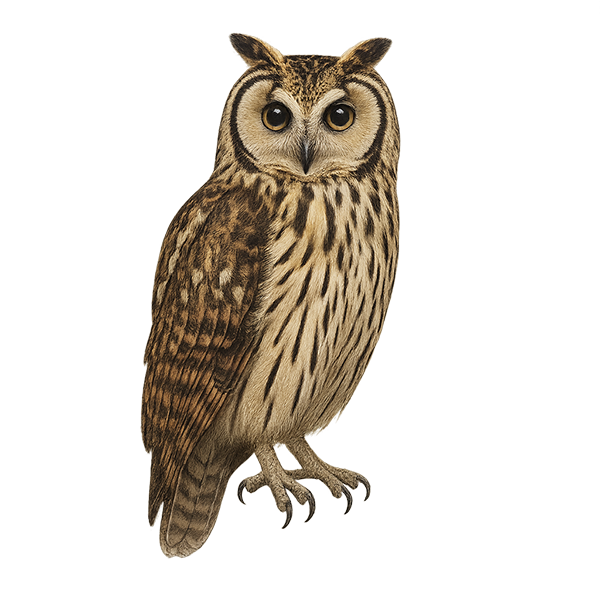The Steller's Jay, with its striking blue plumage and distinctive black crest, is a fascinating bird of the coniferous forests of western North America. Measuring about 30 to 34 cm in length, it is distinguished by its black head and bright blue body. This bird is known for its bold and curious behavior, often seen foraging on the ground for food or skillfully flying between trees. Omnivorous, it feeds on seeds, fruits, insects, and even small animals. The Steller's Jay is also an excellent mimic, capable of reproducing the calls of other birds and even some human sounds.
The Smith's green-eyed gecko (Gekko smithii) is a medium-sized nocturnal lizard (total length up to 35 cm, SVL 19 cm) with olive-green to brown mottled dorsal coloration and a pale throat bordered by dark mottling. Endemic to tropical and secondary forests of Southeast Asia (Thailand, Malaysia, Indonesia, Myanmar, Singapore), it occupies tree trunks and riparian vegetation where it forages for insects and arachnids. Reproduction occurs year-round, with females laying clutches of two eggs followed by an incubation period of 60–90 days. It uses crevices for shelter, produces harsh calls to communicate, and exhibits moderate wariness.
The Sikora's Leaf-tailed Gecko, Uroplatus sikorae, is a master of disguise, blending seamlessly into its surroundings with skin that mimics tree bark. Native to Madagascar, it primarily inhabits humid tropical forests. This nocturnal reptile is known for its ability to remain motionless for extended periods, making it difficult to spot. Its leaf-shaped tail is not only a tool for camouflage but also a means of communication with its peers. Measuring between 15 and 20 cm, it primarily feeds on insects. Although its appearance is striking, it is harmless to humans.
The Satanic Leaf-Tailed Gecko, Uroplatus phantasticus, is a master of camouflage native to Madagascar. Its ability to blend into its surroundings is remarkable, thanks to its skin that mimics the appearance of dead leaves. This small reptile, measuring about 10 cm, has a leaf-shaped tail that allows it to effectively hide from predators. Primarily active at night, it feeds on insects and other small invertebrates. Its coloration ranges from brown to gray, with occasional reddish hues, enabling it to blend into leaf litter. Although fascinating, it is vulnerable to deforestation and habitat loss.
The Southern Giraffe is a subspecies of giraffe, characterized by its slender body, long neck, and robust legs. It typically stands between 4.3 and 4.8 meters tall, with males being larger and heavier than females, weighing between 800 and 1,200 kg. Its coat is light brown to beige, with irregular darker patches that are bordered by white. The patches of the Southern Giraffe are larger and more spaced out than those of other subspecies, giving it a distinctive pattern. It primarily inhabits the savannas and woodlands of southern Africa, notably in South Africa, Namibia, Botswana, and Zimbabwe. Herbivorous, it feeds primarily on acacia leaves, berries, and fruits, which it reaches with its long neck and prehensile tongue. While the species is currently less threatened than other giraffe subspecies, the Southern Giraffe faces risks related to habitat loss and population fragmentation.
The Southern Boubou, Laniarius ferrugineus, is a medium-sized bird, measuring about 20 to 25 cm in length. It is recognizable by its distinctive plumage, with a glossy black back and a rusty belly. This bird is mainly found in southern Africa, where it inhabits forests, thickets, and gardens. Its melodious song is often heard before the bird is seen. The Southern Boubou is a territorial bird, often living in pairs. It primarily feeds on insects but can also consume fruits. Although generally discreet, it may be observed in the open when singing. Its adaptability to various habitats makes it a relatively common species within its range.
Small penguin 45–60 cm long, 2–4.3 kg, with contrasting black-and-white plumage and distinctive yellow crest tufts on each side of the head. Occurs on subantarctic islands, feeds mainly on crustaceans, fish and krill, diving to 100 m, and breeds in large colonies on rocky shores.
The Southern Reedbuck, or Redunca arundinum, is a medium-sized herbivorous mammal belonging to the Bovidae family. It is primarily found in the moist savannas and grasslands of southern Africa. Recognizable by its light brown coat and lyre-shaped horns, the Southern Reedbuck is a gregarious animal living in small family groups. It is most active at dusk and dawn, feeding mainly on grasses and aquatic plants. Although generally wary, it can be observed from a distance in its natural habitat. Its population is stable, but it is threatened by habitat loss and hunting.
The Subantarctic dotterel, or Zonibyx modestus, is a small coastal shorebird with subtle plumage, typically found along sandy shores and lagoons of southern South America. Its pale gray-brown back, white belly, and faint light eyebrow provide excellent camouflage in open habitats. It nests on the ground near water and feeds on aquatic invertebrates, insects, and small crustaceans. A discreet species, it is vulnerable to human disturbance on beaches. Its population is generally considered stable but may be locally threatened.
The Sky‑blue poison frog, Hyloxalus azureiventris, is a small, brightly colored frog native to the humid tropical forests of Peru. It is characterized by its vivid coloration, with a brown back and a striking blue belly, allowing it to blend in with fallen leaves and streams. Measuring about 2 to 3 cm, it is primarily terrestrial and feeds on small insects. This species is known for its territorial behavior, with males actively defending their territory against intruders. The Blue-bellied Poison Frog plays a crucial role in the ecosystem by regulating insect populations and serving as prey for many predators.
The Ameerega silverstonei, commonly known as Silverstone's Poison Frog, is a captivating species from the Dendrobatidae family. It is renowned for its vibrant colors, typically a mix of blue and black with distinctive patterns, which serve as a warning to potential predators of its toxicity. Native to the humid tropical forests of Peru, this frog prefers habitats rich in vegetation where it can hide and feed on insects. It is diurnal, meaning it is active during the day. Although its conservation status is not critical, deforestation and habitat loss pose potential threats to its survival.
The Splash-backed Poison Frog, Adelphobates galactonotus, is a small, brightly colored frog native to the humid tropical forests of Brazil. Known for its striking skin, which can range from yellow to bright red, it serves as a warning to potential predators of its toxicity. This species typically measures between 3 and 4 cm in length. It primarily inhabits the forest floor but can also climb low vegetation. Its diet mainly consists of small insects and other invertebrates. Although its population is currently stable, it is threatened by deforestation and habitat loss.
Leucostethus fraterdanieli is a small, colorful frog native to the humid tropical forests of Colombia. It is distinguished by its smooth skin and vibrant color patterns ranging from green to brown, often speckled with black spots. This species is typically found near water bodies, where it primarily feeds on insects. Despite its small size, it plays a crucial role in the ecosystem by regulating insect populations. Its reproduction is aquatic, with eggs laid in water where tadpoles develop. Deforestation and water pollution threaten its natural habitat, making it a vulnerable species.
The Silverstone's Diminutive Frog, scientifically known as Silverstoneia minutissima, is a tiny frog species endemic to the humid tropical forests of Central America. Notable for its diminutive size, it often measures less than 2 cm in length. Its coloration ranges from brown to green, with distinctive patterns that allow it to blend seamlessly into the leaf litter of the forest floor. This frog is primarily terrestrial and feeds on small insects and other invertebrates, playing a crucial role in regulating insect populations within its ecosystem. Despite its elusive nature, it is vulnerable to habitat disturbances, particularly deforestation and climate change.
The Silverstoneia erasmios is a small, colorful frog endemic to the humid tropical forests of Central America. It is characterized by its smooth skin and vibrant patterns ranging from brown to green with hints of yellow. Typically measuring between 2 and 3 cm, it is often found near streams where it breeds. Its discreet call is an indicator of its presence. Although its habitat is threatened by deforestation, it remains relatively abundant in protected areas. This species plays a crucial role in the ecosystem by regulating insect populations.
The Spot-backed Antwren is a small bird from the Thamnophilidae family, primarily found in the humid tropical forests of South America, especially in Colombia and Venezuela. It is characterized by its grey plumage with white spots on its back, providing effective camouflage in its natural habitat. This bird is often seen in pairs or small groups, actively moving in search of insects and spiders. Although discreet, its distinctive song makes it easier to locate. The Spot-backed Antwren plays an important role in the ecosystem by controlling insect populations. Its conservation is crucial as deforestation threatens its natural habitat.
The Swainson's Thrush is a medium-sized migratory bird belonging to the Turdidae family. It is recognizable by its olive-brown plumage on the back and flanks, contrasting with a lighter belly. Its melodious and flute-like song is often heard in the temperate forests of North America, where it breeds during the summer. It prefers wooded habitats, especially coniferous and mixed forests. In the fall, it migrates to Central and South America to spend the winter. The Swainson's Thrush primarily feeds on insects and berries, which it finds on the ground or in bushes. It is generally discreet but can be observed during its migratory movements.
The song thrush is a passerine bird found primarily in forests, hedgerows, and gardens across Europe, Asia, and North Africa. It is easily recognizable by its spotted plumage on the chest and belly, and its olive-brown back. This bird primarily feeds on earthworms, insects, and berries, and is particularly known for its powerful and melodious song, which varies depending on its location and the breeding season.
The Sandhill Crane, or Grus canadensis, is a majestic and slender bird, recognizable by its ash-gray plumage and vivid red crown. It stands about 1 to 1.2 meters tall with a wingspan reaching up to 2 meters. This migratory bird is often seen in large flocks during its seasonal movements between breeding grounds in North America and wintering areas further south. The Sandhill Crane is omnivorous, feeding on aquatic plants, insects, and small vertebrates. It is known for its spectacular courtship dances, which include graceful leaps and wing flapping. Although its conservation status is currently "least concern," it faces threats such as habitat loss and climate change.
The Saharan cheetah, or Acinonyx jubatus hecki, is a rare subspecies of cheetah found mainly in the desert regions of the Sahara. It is distinguished by its pale coat and less pronounced spots, making it well-suited to its arid environment. This feline is an agile and fast predator, capable of reaching impressive speeds to catch its prey. Unfortunately, it is critically endangered due to habitat loss, hunting, and the decline of its natural prey. Conservation efforts are crucial for its survival. Solitary by nature, the Saharan cheetah is primarily active during the cooler hours of the morning and evening, avoiding the intense desert heat.
The Swallow-tailed Bee-eater is a colorful and fascinating bird, recognizable by its long forked tail and vibrant plumage. It displays bright shades of green, blue, and yellow, making it easily identifiable in its natural habitat. This bird is often seen in small groups, primarily feeding on flying insects that it catches mid-air. It has a particular fondness for bees and wasps, which it skillfully handles. The Swallow-tailed Bee-eater is a partial migrant, inhabiting savannas, open forests, and semi-arid regions of sub-Saharan Africa. Its presence is an indicator of ecosystem health, as it relies on the availability of insects for sustenance.
The Somali Bee-eater is a colorful bird, primarily green with shades of blue and yellow, and a reddish throat. It is endemic to the arid regions of the Horn of Africa, particularly in Somalia and northeastern Kenya. This bird is often seen in small groups, perching on exposed branches from where it hunts flying insects. Its flight is fast and agile, allowing it to catch prey mid-air. The Somali Bee-eater is a social bird, often seen preening each other. It nests in burrows dug into sandy banks, where it lays its eggs. Although its population is stable, it is sensitive to habitat disturbances.
The Southern Carmine Bee-eater, Merops nubicoides, is a vibrant and captivating bird found primarily in southern Africa. It is distinguished by its bright red plumage, turquoise head, and long, tapered tail. This bee-eater is about 35 cm long, with a slightly curved black bill, perfect for catching insects in flight. It frequents sandy riverbanks and open savannas, where it digs burrows for nesting. Sociable by nature, it lives in colonies and feeds mainly on bees and wasps, which it catches in mid-air. Its flight is fast and agile, often accompanied by high-pitched calls. This beautiful bird is a delight to watch, especially during its courtship displays.
The Shining Honeycreeper, Cyanerpes nitidus, is a small, vibrant tropical bird, primarily electric blue with black wings and tail. Males display a striking plumage, while females are generally duller, with green and yellow hues. This bird is commonly found in the humid tropical forests of South America, particularly in Brazil, Colombia, and Venezuela. It primarily feeds on nectar but also consumes insects and fruits. Its slender, curved beak is perfectly adapted for extracting nectar from flowers. The Shining Honeycreeper is an active and social bird, often seen in small groups or pairs.
The Cyanerpes lucidus, or Shining Honeycreeper, is a small tropical bird with vibrant colors, primarily blue with black wings and a slender, curved beak. This nectarivore primarily feeds on nectar but also consumes fruits and insects. It is found in the humid forests and forest edges of Central America, from southern Mexico to Panama. Males display a striking blue plumage, while females are more subdued in green. Their behavior is generally active and social, often seen in small groups. They play a crucial role in pollinating tropical plants.
The Snowy Owl is a large nocturnal raptor, easily recognizable by its pure white plumage, speckled with dark spots on its back and wings. It measures about 55 to 65 cm in length, with a wingspan of 1.3 to 1.5 meters, and weighs between 1.5 and 2.5 kg. Its head is round, with large, piercing yellow eyes and a short, hooked beak. The Snowy Owl primarily inhabits the Arctic regions, notably in Canada, Alaska, Scandinavia, and Russia, where it frequents tundras and snowy landscapes. It primarily feeds on small mammals, such as lemmings, but also hunts birds and occasionally fish. This raptor is an excellent hunter, capable of spotting its prey with its keen vision, even in low light conditions. Although the Snowy Owl is not currently endangered, it is sensitive to climate change and the loss of its natural habitat.
The Ermine is a small carnivorous mammal of the weasel family, easily recognizable by its immaculate white winter coat, which contrasts with its black-tipped tail. It measures about 25 to 35 cm in length, with a tail that can reach up to 10 cm, and weighs between 100 and 350 g. During the summer, its coat is typically brown with a lighter belly, but it turns completely white in winter, except for the black tip of its tail. The Ermine primarily inhabits forests, grasslands, and mountainous areas across Eurasia and North America. It is an excellent hunter, feeding mainly on small mammals such as mice, voles, but also on birds and eggs. The Ermine uses its hunting skills to capture prey with great agility and speed. While it is not endangered, the Ermine can be affected by habitat loss and climate change, particularly affecting the color of its fur.
The Striated Heron, or Butorides striata, is a small heron with predominantly grey-green plumage, a black cap, and yellow legs. It is often seen in wetlands, mangroves, and along rivers. This heron is an opportunistic feeder, primarily consuming fish, insects, and small crustaceans. It employs a unique hunting technique, remaining still before quickly striking its prey. Although generally solitary, it can sometimes be seen in small groups. Its ability to adapt to various aquatic habitats allows it to inhabit a wide range of geographical regions, from tropical to temperate areas.
The Short-eared Owl is a small nocturnal raptor, easily recognizable by its pale yellowish plumage and large, piercing yellow eyes. It measures about 34 to 40 cm in length, with a wingspan of 80 to 95 cm, and weighs between 180 and 400 g. Its face is disc-shaped, like that of other owls, and its plumage, which is cream or brown, is speckled with dark spots that provide excellent camouflage in the grasslands and marshes where it resides. The Short-eared Owl primarily inhabits open areas, such as marshes, grasslands, and farmland, across Europe, Asia, and North America. It mainly hunts small mammals, such as voles and mice, as well as birds and insects. This raptor is an excellent nocturnal hunter, using its very sensitive ears and sharp vision to locate prey in the dark. Although the species is not immediately endangered, it is vulnerable to habitat loss, water pollution, and human disturbance.
The Striped Owl, or Asio clamator, is a medium-sized nocturnal raptor known for its prominent ear tufts and brown and white streaked plumage. It primarily inhabits wooded areas and savannas in Central and South America. This owl is an opportunistic hunter, feeding mainly on small mammals, birds, and insects. Its flight is silent, allowing it to surprise its prey. Although primarily nocturnal, it can be seen at dawn or dusk. The Striped Owl is a solitary bird, except during the breeding season when it forms pairs.


